A Boa is any one of several different species of snake in the Boinae subfamily. In fact, scientists recognize at least 31 different species of boas. The most well-known of these snakes is the Boa Constrictor, also known as the Red-Tailed Boa. Read on to learn about the Boa Constrictor.
Description of the Boa Constrictor
These reptiles grow to impressive lengths. Adult males reach measurements of 8 ft., while females reach 10 ft. or longer. The average snake usually weighs about 30 lbs., but it isn’t unusual for some individuals to reach 60 lbs. or more.
Their coloration varies, though most have brown or grey scales. Along their backs, they have darker portions of scales in a saddle-like pattern.
Interesting Facts About the Boa Constrictor
This species of snake is quite interesting. They are impressive predators, and have several unique traits that help them survive.
- That Boa’s a Constrictor, but it’s not a Boa Constrictor – All of the different species of boas use their muscular bodies to constrict and kill their prey. However, not all species of boas are Boa Constrictors! Only the species Boa Constrictor is the true Boa Constrictor.
- Constriction – It is a common myth that constrictors suffocate their prey. In reality, it takes an incredibly long time for an animal to suffocate, and that gives the animal lots of time to bite and claw at the snake. The latest research tells us that these snakes actually use their muscular bodies to cut off their prey’s blood circulation.
- Long Lived – This species is a popular pet, but many people do not realize that they live incredibly long lives! Healthy boas regularly reach their 20th or 30th birthday, and some even live past 40!
- Sad Stigma – Even though many people keep them as pets, these creatures face the same stigma as all snakes. In reality, these boas do not pose a danger to humans. In fact, they are actually beneficial because they eat rats and mice that spread disease!
Habitat of the Boa Constrictor
This species lives in a variety of different ecosystems. In the wild, they prefer the edges of rainforests, but they also occupy grasslands, scrublands, woodlands, and even semi-arid regions. You can also commonly find them near riparian areas – which are regions alongside rivers and lakes.
Outside of living as a pet, boas also live in close proximity to humans in the wild. They are particularly fond of farms and agricultural areas, which typically have a large population of rats and mice.
Distribution of the Boa Constrictor
These snakes have an incredibly wide distribution. You can find populations in Central and South America, as well as many of the neighboring islands. Their range extends from the Andes Mountains to the eastern coast of South America.
Researchers split the species into separate subspecies, and each subspecies has its own unique range. For example, the Pearl Island Boa subspecies lives only on the Pearl Islands near Panama.
Diet of the Boa Constrictor
Boas are carnivores, and only eat other animals. They are not picky, and will eat just about anything that they can easily catch and swallow. Their primary sources of prey are rats and mice, birds, bats, and other small creatures.
Their usual hunting strategy is ambush. They hang from a branch, holding incredibly still, and wait for prey to come too close. These snakes do not have venom. Instead, they use their muscular bodies to cut off their prey’s circulation. It takes several days for them to digest a meal.
Boa Constrictor and Human Interaction
Human activity does impact this species to some extent. Habitat destruction and capture for the pet trade threatens wild populations. However, they have wide distribution and high populations. Certain subspecies and regional populations face more danger than others.
Domestication
Humans have not domesticated this reptile in any way.
Does the Boa Constrictor Make a Good Pet
For most people, boas do not make good pets. Even captive-bred animals are wild snakes with specific dietary and housing needs. They grow quite large, and adult snakes need extensive housing to live in. Many people also underestimate their lifespan, and do not realize they are a several-decade long commitment.
Boa Constrictor Care
You need an enclosure that fits the size of your snake. Young snakes live in smaller enclosures, but you must graduate them to larger habitats as they grow. Their housing also needs high humidity and high temperature, these specifications must be maintained for the snake to remain healthy.
Reptile keepers feed their snakes rats and mice. The safest way to feed them is using frozen rodents that you thaw before feeding. This prevents injury to the snake and potential intestinal parasites.
Behavior of the Boa Constrictor
Boas are solitary snakes. They live alone, and only interact with other members of their species to reproduce. Unlike some reptiles, these creatures hunt at sunrise, sunset, and overnight.
When the weather is cold, some snakes do emerge during the daytime to bask in the sun. They spend most of their nights lying in wait for prey to come close enough to strike.
Reproduction of the Boa Constrictor
These snakes breed during the dry season, and usually only reproduce every other year. They are viviparous, which means they develop their young within the uterus using a placenta. At the end of the gestation period they give birth to live young.
The gestation period lasts anywhere from 5 to 8 months, after which the female gives birth to an average of 24 young snakes. The young are independent soon after birth, and strike out on their own.

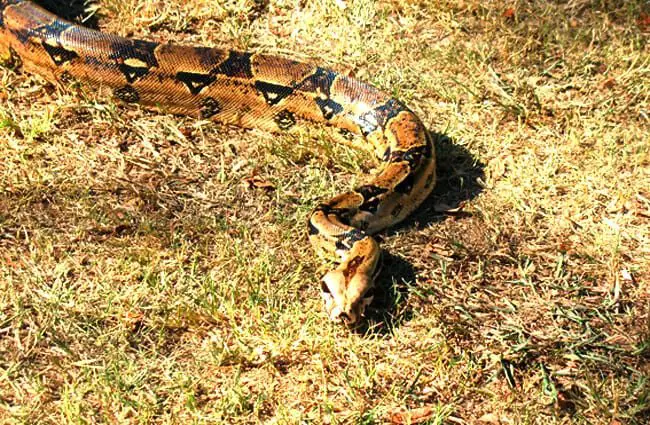





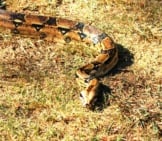


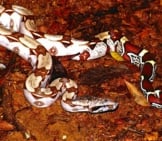
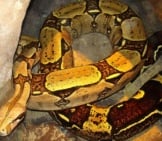
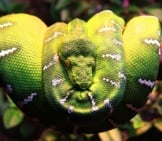
![Red Angus Closeup of a beautiful Red Angus cowPhoto by: U.S. Department of Agriculture [pubic domain]https://creativecommons.org/licenses/by/2.0/](https://animals.net/wp-content/uploads/2020/03/Red-Angus-4-238x178.jpg)












![Red Angus Closeup of a beautiful Red Angus cowPhoto by: U.S. Department of Agriculture [pubic domain]https://creativecommons.org/licenses/by/2.0/](https://animals.net/wp-content/uploads/2020/03/Red-Angus-4-100x75.jpg)

